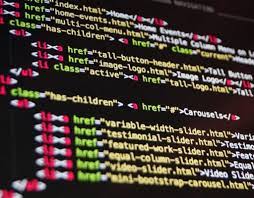When it comes to writing clean and maintainable PowerShell code, following best practices can significantly improve code quality and readability. Here are some PowerShell and scripting best practices to consider:
- Use meaningful variable and function names: Choose names that accurately describe the purpose of the variable or function. Avoid single-letter variable names or ambiguous terms.
- Comment your code: Add comments to explain the purpose and functionality of your code. This helps other developers (including your future self) understand your intentions and can be particularly helpful in complex scripts.
- Indentation and formatting: Use consistent indentation and formatting throughout your code. Indentation helps to visually group statements and enhance readability.
- Modularize your code: Break your code into logical functions or modules. This makes your code more reusable, easier to test, and simpler to debug and maintain.
- Error handling and logging: Implement proper error handling mechanisms to capture and handle errors gracefully. Use try-catch blocks to handle exceptions and consider logging errors to a file or event log for troubleshooting purposes.
- Avoid hardcoding values: Instead of hardcoding values in your script, use parameters or variables to make your code more flexible. This allows for easier modification and reuse of the script.
- Use meaningful and consistent casing: Choose a consistent casing style (e.g., camel case or Pascal case) for variables, functions, and cmdlets. This improves code readability and makes it easier to distinguish between different elements.
- Validate input and handle user prompts: Validate user-provided input to prevent script failures or unexpected behaviors. Use prompts or input validation to ensure the script handles input correctly and gracefully.
- Use PowerShell best practices: Familiarize yourself with PowerShell’s best practices, including using pipeline operations, proper use of PowerShell cmdlets, and using built-in PowerShell features effectively. Following these practices increases the efficiency and effectiveness of your scripts.
- Test your code: Test your scripts in a controlled environment before deploying them into a production environment. This helps identify any issues before they impact your systems.
- Use Parameterized Scripts: Instead of relying on hard-coded values within your scripts, consider using parameters. Parameters allow you to pass values into your scripts at runtime, making them more flexible and reusable. Using parameters also helps improve script readability and reduces the need for modifying the script directly.
- Properly Format Output: When outputting information from your script, ensure it is properly formatted for readability. Use appropriate formatting cmdlets like
Format-Table,Format-List, orOut-GridViewto present data in a clear and organized manner. Consider using consistent column widths, headers, and alignment to enhance readability. - Avoid Aliases and Abbreviations: While PowerShell allows the use of aliases and abbreviations for cmdlets and parameters, it’s best to avoid them in favor of full cmdlet names and parameter names. Using the full names improves code clarity and makes it easier for others to understand your code.
- Validate Input:If your script accepts user input or parameters, validate them to ensure they meet the required criteria. Validate input types, ranges, or specific values to prevent errors or unexpected behavior.
- Use Error Preference Settings: PowerShell provides error preference settings that control how errors are handled. It’s a good practice to set the error preference explicitly in your script, such as using
ErrorActionandErrorVariable, to ensure consistent error handling throughout your code. - Modularize Your Code: Break your scripts into smaller, modular functions or modules that perform specific tasks. This promotes code reusability and maintainability. With modular code, you can focus on individual functions or modules, making it easier to understand, test, and update your code.
- Use Comment-Based Help: PowerShell supports comment-based help, allowing you to provide documentation directly within your scripts. By adding structured comments with details about the script, its purpose, parameters, and examples, you make it easier for others to understand and use your code. This information can be extracted with the
Get-Helpcmdlet. - Use Strict Mode: Enable strict mode at the beginning of your scripts using
Set-StrictMode -Versionto enforce stricter rules and avoid common scripting mistakes. Strict mode helps detect and prevent issues like using uninitialized variables, references to non-existent properties, or undeclared functions. - Consider Performance: Keep performance in mind when writing PowerShell scripts. Avoid unnecessary loops, nested calls, or excessive memory usage. Use appropriate techniques like filtering with
Where-Objectinstead of looping through all items. Measure and optimize performance when dealing with large datasets or resource-intensive operations. - Regular Refactoring: Refactor your code regularly to improve its structure, readability, and maintainability. Refactoring involves restructuring the code without changing its external behavior. Look for opportunities to simplify complex logic, eliminate duplicate code, and improve the overall design of your scripts.
- Follow PowerShell Community Best Practices: Stay updated with the PowerShell community and follow best practices outlined by experienced PowerShell scripters. The PowerShell community actively shares knowledge, tips, and best practices through blogs, forums, and conferences. Engaging with the community helps you learn new techniques and stay informed about the latest developments in PowerShell scripting.
By adhering to these best practices, you can write clean and maintainable PowerShell code that is easier to understand, modify, and troubleshoot. It also helps promote consistency and collaboration when working with other developers.
SHARE
